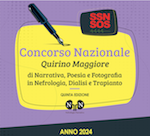Sonography in Peritoneal Dialysis Patients
DOI:
https://doi.org/10.33393/gcnd.2016.730Keywords:
Exit site infections, Peritoneal dialysis, Sonography, Tunnel infections, Visceral slideAbstract
Traditionally computed tomography (CT) and more recently magnetic resonance (MR) are the imaging modalities of choice for the evaluation of peritoneum and peritoneal cavity in primary and secondary pathologic conditions. Nevertheless, ultrasound (US) also may be a valuable, accurate, safe, relatively inexpensive and readily accessible diagnostic tool to investigate the diseases that can affect the peritoneal membrane. US is able to provide quantitative information demonstrating much smaller quantities of free intraperitoneal fluid (ascites) being more sensitive than CT in this regard. Sonographic characteristics of ascites allow to detect the presence of blood, pus or neoplastic cells in echogenic fluid. Sonography is very helpful when planning and performing interventional procedures on abdominal wall such as: fine-needle aspiration, core biopsy and drainage: with modern devices lesions of less than 4 mm may be easily targeted. Ultrasonography is used in the assessment of several procedures and complications in peritoneal dialysis (PD) patients. Some of them are well documented whereas other indications are less clear. Peritoneal ultrasound fields of applications include some of the following: correct patients' enrollement, ultrasound-guided catheter's placement, potential diagnosis of exit site and tunnel infections and/ or peritonitis (both infectious and/or sclerosing) and leakage amount's assessment. The purpose of this review is to describe an US technique for optimal detection and localization of the main complications commonly encountered in patients affected by chronic kidney disease undergoing peritoneal dialysis.Downloads
Download data is not yet available.
Downloads
Published
2016-11-21
How to Cite
Barbera, V., Di Lullo, L., Federici, M., Otranto, G., Santoboni, F., & Santoboni, A. (2016). Sonography in Peritoneal Dialysis Patients. Giornale Di Clinica Nefrologica E Dialisi, 28(4), 239–248. https://doi.org/10.33393/gcnd.2016.730
Issue
Section
Reviews
License
Authors contributing to Giornale di Clinica Nefrologica e Dialisi (GCND) agree to publish their articles under the CC-BY-NC 4.0 license, which allows third parties to re-use the work without permission as long as the work is properly referenced and the use is non-commercial.











